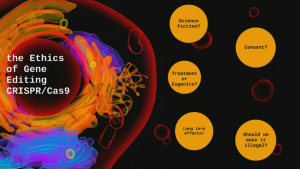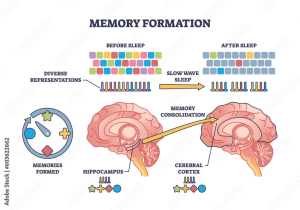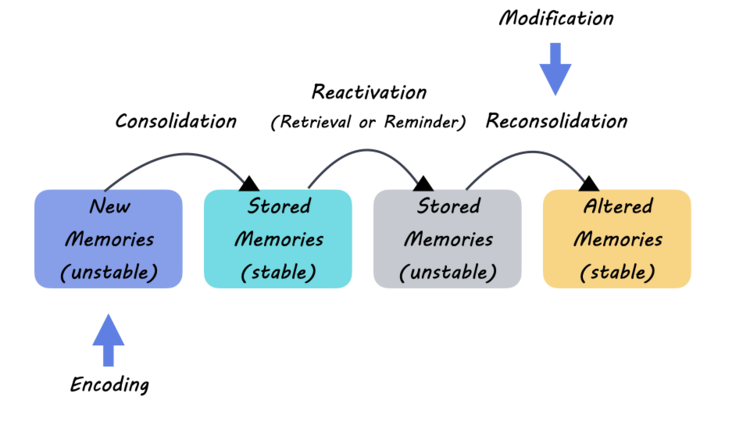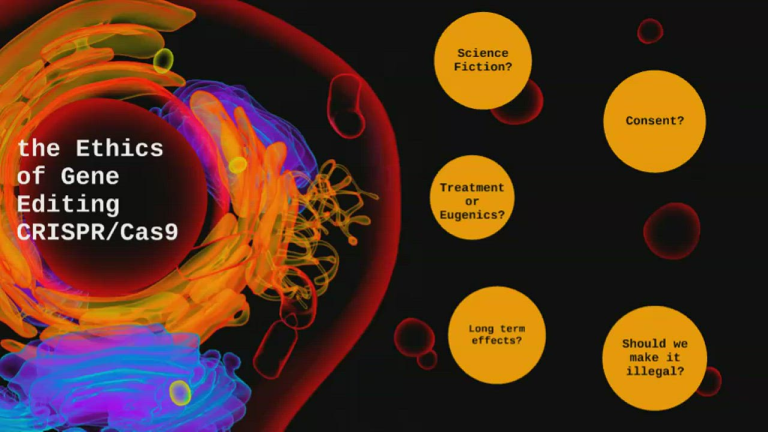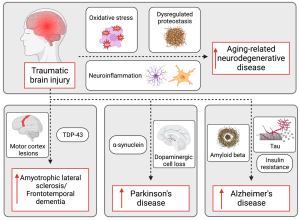Memory formation techniques are at the forefront of neuroscience research, revealing the intricate processes that underlie how we learn and remember. Recent studies have illuminated the role of synaptic plasticity—how signals between neurons can be strengthened or weakened—thereby allowing for the exploration of memory disorders like dementia. With breakthroughs in techniques such as the newly developed EPSILON method, researchers can now observe the molecular machinations that contribute to memory formation in real-time. This advancement not only holds promise for understanding typical memory processes but also paves the way for novel dementia treatments by addressing the underlying causes of synaptic dysfunction. With neuron signaling at the heart of these findings, the implications for enhancing cognitive health are profound and far-reaching.
Exploring how we form memories involves delving into the methodologies that facilitate cognitive retention and recall. These memory enhancement strategies rely on the brain’s adaptability and the connections between neurons, known as synapses, which play a crucial role in learning. Techniques aimed at understanding these connections can provide insights into cognitive disorders and shape effective interventions. By leveraging neurologically focused advancements, we can uncover the mechanisms behind age-related memory decline and discover possibilities for early treatment of conditions like Alzheimer’s. The relationship between brain chemistry and memory retention forms the backbone of this investigative journey into cognitive science.
Understanding Synaptic Plasticity and Memory Formation
Synaptic plasticity represents the underlying mechanism through which our brain adjusts and reorganizes itself in response to experiences. This dynamic process involves the strengthening or weakening of synapses—the connection points between neurons—forming the foundation for learning and the consolidation of memories. The recent technique developed by Harvard researchers, known as Extracellular Protein Surface Labeling in Neurons (EPSILON), has unveiled critical insights into this phenomenon, shedding light on how synaptic interactions adjust over time. By capturing the behavior of AMPAR proteins, essential for neuron signaling, EPSILON holds the potential to transform our understanding of memory and cognition.
As researchers delve deeper into the molecular architecture of memory, they are uncovering the intricate rules that dictate synaptic changes during learning processes. These discoveries are particularly significant for understanding memory disorders, as they illuminate the disturbances in synaptic plasticity that are characteristic of conditions like Alzheimer’s disease. Ultimately, insights gained from studying synaptic plasticity not only advance neuroscience research but also pave the way for developing innovative therapies aimed at improving memory and treating related disorders.
Innovative Techniques for Mapping Memory
The EPSILON method represents a groundbreaking advancement in neuroscientific research, enabling unprecedented visualization of synaptic behavior. Through fluorescent labeling and advanced microscopy, this technique allows scientists to track the movements of neurotransmitter receptors at remarkably high resolutions, revealing previously unseen details about how memories are formed and maintained. The precision of this technique acts like a spotlight, illuminating the complex interactions within the brain’s synaptic networks and enhancing our understanding of how memories evolve over time.
This new approach not only facilitates the study of normal memory processes but also opens avenues for addressing memory-related disorders. By mapping the history of synaptic plasticity in live brain environments, researchers can now gain insights into how synapse strength is regulated during various learning episodes. Such knowledge is crucial for formulating effective dementia treatments, as it aids in identifying potential therapeutic targets for augmenting cognitive function and developing strategies for mitigating memory impairments.
The Role of AMPARs in Synaptic Transmission
AMPARs, or alpha-amino-3-hydroxy-5-methyl-4-isoxazolepropionic acid receptors, play a pivotal role in synaptic transmission and are vital for cognitive functions such as learning and memory. These receptors are responsible for mediating fast synaptic transmission in the central nervous system and are intricately involved in the synaptic plasticity process. The findings reported by the Harvard research team highlight the critical role AMPARs have in forming memory engrams, which are the biological traces that persist following learning experiences.
By studying the dynamics of AMPAR movements with the EPSILON technique, scientists can observe how these receptors are trafficked to and from synapses, correlating their behavior with the formation of long-lasting memories. This intricate relationship underscores the importance of AMPARs in not just conveying information between neurons but also shaping our understanding of how memories are encoded and retrieved, providing a deeper insight into potential intervention strategies for memory disorders.
Correlating Synaptic Activity and Memory Traces
Recent research has demonstrated a striking correlation between synaptic activity — particularly the trafficking of AMPARs — and the expression of immediate early genes like cFos, which are markers of neuronal activation. This relationship highlights how behavior and memory retention are intricately linked at the cellular level. By utilizing the EPSILON technique, researchers can explore these connections in real-time, contributing to a more nuanced understanding of memory formation processes and their potential breakdown involved in memory disorders.
Understanding how synaptic activity correlates with the formation of engrams reinforces the concept that the brain’s memory architecture is both dynamic and adaptable. This research not only provides a foundation for exploring therapeutic avenues to treat dementia and other memory-related diseases but also opens the door to examining how different types of memories arise in distinct synaptic contexts. As our comprehension of these processes grows, so does the potential to develop precise treatments that address the underlying causes of memory decline.
Implications of Neuroscience Research on Memory Disorders
The intersection of groundbreaking neuroscience research and the study of memory disorders presents a promising frontier in medical science. With techniques like EPSILON providing deeper insights into synaptic architecture, we are now better equipped to understand the biological basis of memory impairments associated with diseases like Alzheimer’s. This enhanced understanding opens pathways for developing targeted dementia treatments that can address specific dysregulations in synaptic activity, potentially reversing or mitigating the effects of these debilitating conditions.
Moreover, findings from such studies can inform not only pharmacological interventions but also behavioral strategies that enhance neuroplasticity. By fostering an environment conducive to learning and memory formation, there exists a possibility of improving outcomes for those afflicted by memory disorders. As researchers continue to unravel the complexities of neuron signaling and synaptic functioning, the implications for therapeutic advancements become increasingly vast.
Future Directions in Memory Research
Looking ahead, the application of the EPSILON technique in various research contexts promises significant advancements in the field of memory research. As scientists around the world begin utilizing this innovative tool, it becomes possible to explore an array of cognitive phenomena beyond just memory formation. By examining different types of memories and their corresponding synaptic patterns, researchers may uncover fundamental principles governing learning processes and the brain’s adaptiveness.
This approach sets the stage for interdisciplinary collaborations that can merge insights from neuroscience, psychology, and even artificial intelligence, further enriching the understanding of cognition. Future research endeavors could lead to personalized therapeutic strategies based on individual synaptic profiles, potentially revolutionizing treatment prospects for memory disorders. In sum, the landscape of memory-related research is rapidly evolving, driven by cutting-edge techniques and a commitment to understanding the intricacies of the brain.
The Importance of Basic Science in Neuroscience Advances
The journey from basic scientific research to practical therapeutic applications reflects the importance of foundational studies in advancing our understanding of complex biological processes. As noted by Adam Cohen, breakthroughs often stem from seemingly unrelated research endeavors, such as the development of HaloTag technology. These foundational innovations contribute significantly to the sophisticated techniques used today, enhancing our capabilities to investigate neuron signaling and synaptic activities.
Investing in basic research is crucial for catalyzing discoveries that can translate into meaningful advancements in human health. Support for these scientific undertakings fosters a better understanding of underlying mechanisms of memory formation and the pathways that lead to disorders such as dementia. By bridging the gap between fundamental research and applied neuroscience, we can strive toward innovative treatment solutions that hold promise for improved cognitive health.
Enhancing Therapeutic Strategies Through Synaptic Insights
The insights garnered from mapping synaptic interactions and understanding synaptic plasticity pave the way for enhancing therapeutic strategies targeting memory disorders. With the application of EPSILON, scientists can obtain a clearer understanding of how synapses operate during various memory formation processes, unraveling the complexities that may contribute to cognitive decline. Such knowledge is pivotal in formulating interventions that could potentially enhance synaptic health and memory function.
By identifying specific molecular targets involved in synaptic signaling and memory preservation, tailored therapeutic strategies can be designed. These could range from pharmacological agents that promote synaptic strength to behavioral interventions aimed at improving cognitive resilience. As research continues to evolve, integrating these insights into clinical practice may lead to breakthroughs in treating and possibly preventing memory disorders, ultimately enhancing quality of life for millions.
The Global Impact of Neuroscience Breakthroughs
The dissemination of innovative tools like EPSILON to laboratories worldwide signifies a new era in neuroscience research, where collaborative efforts can drive rapid advancements. This global sharing of resources facilitates a collective understanding of synaptic mechanisms and memory disorders, paving the way for more comprehensive studies and shared findings across diverse populations. As researchers from different backgrounds engage with these techniques, the potential for cross-disciplinary collaborations amplifies, further enriching the study of memory.
The impact of these neuroscience breakthroughs extends beyond academia, influencing healthcare approaches and informing public health policies. As researchers generate new knowledge regarding neuron signaling and memory formation, healthcare professionals can better understand the complexities of memory treatments. This synergy between research and practice is essential for translating scientific discoveries into real-world applications, ultimately contributing to improved health outcomes for individuals facing memory-related challenges.
Frequently Asked Questions
What are Memory Formation Techniques and how do they relate to synaptic plasticity?
Memory Formation Techniques involve methods that enhance the processes by which memories are created and stored. These techniques are closely linked to synaptic plasticity, which is the brain’s ability to strengthen or weaken synapses based on activity levels. By enhancing synaptic plasticity through targeted techniques, we can improve memory formation and potentially mitigate effects seen in memory disorders.
How does neuroscience research contribute to memory formation techniques?
Neuroscience research plays a crucial role in the development of memory formation techniques by revealing the underlying mechanisms of how memories are formed at the synaptic level. Insights from neuroscience, such as the role of proteins like AMPARs in synaptic plasticity, guide researchers in designing effective strategies to enhance memory formation and combat memory disorders.
What role do synaptic connections play in memory formation techniques?
Synaptic connections are essential in memory formation techniques as they serve as the communication pathways between neurons. The strength and adaptability of these synaptic connections, governed by synaptic plasticity, determine the efficacy of memory encoding and retrieval, making them a focal point in exploring improved memory techniques.
Can memory formation techniques help in treating memory disorders like dementia?
Yes, memory formation techniques hold promise in treating memory disorders such as dementia by enhancing synaptic plasticity and promoting the formation of new memories. Research utilizing advanced techniques, like EPSILON, aims to uncover the molecular underpinnings of memory, which may lead to novel therapeutic strategies to counteract the effects of dementia.
What insights have recent studies provided on neuron signaling in relation to memory formation?
Recent studies on neuron signaling have revealed how signaling pathways and synaptic interactions contribute to memory formation. By observing the behavior of proteins like AMPARs at the synapse, researchers can better understand the dynamics of learning and memory, paving the way for techniques that optimize neuron signaling and improve memory retention.
How can understanding synaptic plasticity enhance memory formation techniques for learning?
Understanding synaptic plasticity enhances memory formation techniques by informing us how synapses can be strengthened or weakened, thereby impacting memory retention. Techniques that leverage this knowledge can optimize learning experiences by fostering a more conducive environment for synaptic changes that support effective memory formation.
What emerging memory formation techniques show promise for advancing dementia treatments?
Emerging memory formation techniques, such as the EPSILON method, provide groundbreaking insights into synaptic behavior at high resolutions. These techniques may lead to advancements in dementia treatments by identifying specific molecular targets that can be manipulated to restore synaptic function and improve memory retention.
How does the method of EPSILON contribute to advancements in memory formation techniques?
The EPSILON method significantly contributes to advancements in memory formation techniques by enabling researchers to map synaptic interactions and identify key proteins involved in memory signaling. This high-resolution mapping allows for a better understanding of the dynamics of synaptic plasticity, essential for developing effective memory enhancement strategies.
| Key Points | Description |
|---|---|
| Groundbreaking Technique | Harvard researchers developed EPSILON, a new method to map protein interactions in the brain related to memory. |
| Synaptic Plasticity | Learning and memory rely on synaptic plasticity, the strengthening of neuron connections. |
| Fluorescent Labeling | Combining fluorescent labeling with advanced microscopy enhances observation of synaptic behavior. |
| Role of AMPARs | AMPARs are vital proteins for signal transmission in synapses and play a key role in memory formation. |
| Memory Traces | Research showed that AMPAR trafficking is linked to enduring memory traces (engrams), indicating long-term memory retention. |
| Application to Memory Disorders | EPSILON can provide insights into neurological disorders like Alzheimer’s by examining synaptic dysfunction. |
| Future Potential | The technique may help enhance therapeutic strategies for memory impairments in the future. |
Summary
Memory Formation Techniques, such as Harvard’s revolutionary EPSILON method, offer significant insights into the intricacies of how memories are built within the brain. By mapping protein interactions crucial to synaptic plasticity, researchers can observe how our brains adapt and reorganize in response to information. This advanced understanding not only sheds light on normal memory processes but also paves the way for developing new treatments for disorders like Alzheimer’s, ultimately enhancing our approaches to memory-related therapies.


